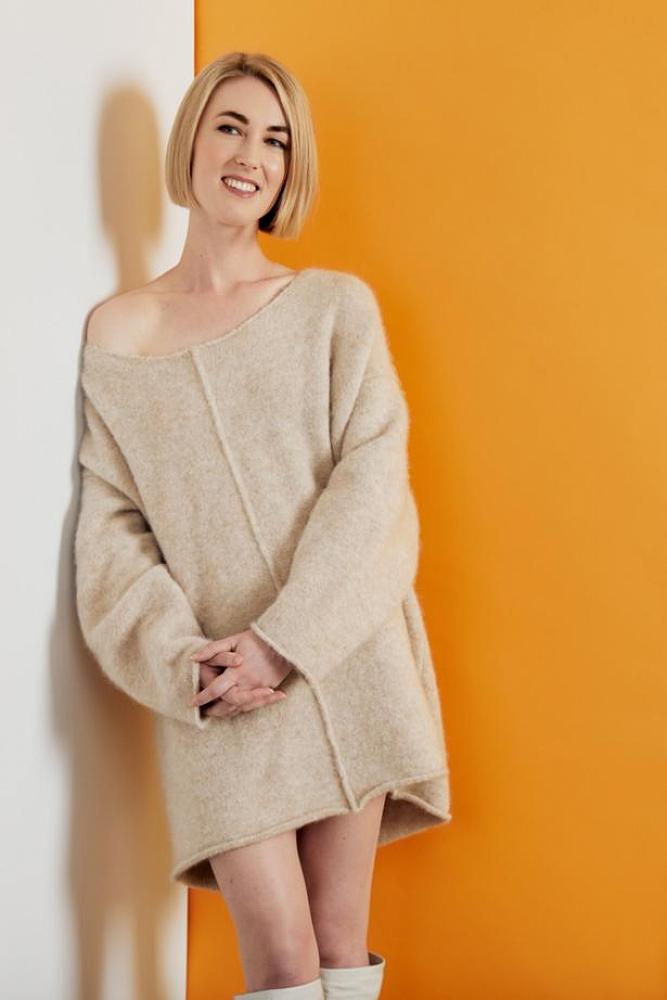
ALUMNA SPOTLIGHT: Grace Wright
Learn about Tauranga Girls' College alumnae and their accomplishments beyond our school gate. This edition we have shared the VIVA article profiling Grace Wright. Please send any potential recommendations to news@tgc.school.nz
Sourced from VIVA Article
It was during her studies at Elam that Tauranga-born artist Grace Wright had a creative epiphany. In her spare time she’d been experimenting with the size of her abstract works, making vibrant gestural strokes on wall-sized canvases. One day she realised her bigger pieces shared the depth of the smaller, baroque-inspired oil paintings she’d been doing at university, works marked by her proficiency of the chiaroscuro shading technique and dramatic narratives, her vibrant, worm-like forms reminiscent of Renaissance scenes traditionally painted by men.
It was a breakthrough for the Kiwi artist, whose exploits both here and overseas have been recognised by Veuve Clicquot. Grace has been named one of five ambassadors representing the luxury brand through its prestigious Friends of the House programme, which celebrates trailblazing female visionaries.
“I feel very honoured to be recognised by the House and to be included with this group of powerhouse women,” says Grace, from the Three Kings studio she shares with eight other artists. “It’s very exciting.”
The attributes these women share — among them, fashion designer Maggie Hewitt of the label Maggie Marilyn, small business advocate Sarah Colcord of online marketplace Chooice, Emma Lewisham of her eponymous skincare line and Victoria Harris of financial platform The Curve — aligns with the ambitious nature of the House’s “Grande Dame of Champagne”, Madame Clicquot.
Like the Frenchwoman who took over her late husband’s small wine business in 1805, a time when women were all but excluded from the business world, Grace has broken with expectation by creating large, audacious works, the scale of which, throughout history, has traditionally been associated with male painters.
“There was a widespread belief that women, because of their ability to reproduce, could only ever be imitators, and only men could be a genius with true original innovation,”
she explains. Although things have undoubtedly improved, even today female artists get less recognition than their male peers.
Grace’s work to change that comes from years of tenacity, first from her early days making her own clothes, designing objects and playing the piano, to 2019 when she graduated with First Class Honours in a Master of Fine Arts. Her work is big and bold — each canvas exudes the energy of her post-abstract expressionist hero, Swedish painter Hilma af Klint, with a character that is all her own. Yet despite each painting’s visceral nature, they take weeks to produce.
First, Grace creates panes of colour to “backlight” the painting; then come several 20- to 30-minute sessions, in which she painstakingly layers her dimensional and dynamic forms in surprising colour combinations. Although their application might seem random, Grace says they come from subconsciously absorbing things around her, anything from a sunset to what she sees online or the palette of a TV show.
Today her work is displayed at Auckland’s Gow Langsford Gallery (home to established artists including Judy Millar, Karl Maughan and Max Gimblett), Parlour Projects in Hawke’s Bay, Gallery 9 in Sydney and online at Gracewright.net.
“I’ve managed to create what I hope will be an enduring career,” Grace says. “I’ve carved out my four days a week in the studio just for painting. I think it’s really important that I’ve given myself that time — it’s helped me get to where I am now. My mindset the whole way through has been to realise that painting is a commitment. I’m pretty consistent.”
Like Madame Clicquot, who invented sparkling rosé and the riddling table to clarify wine (a device that continues to be used today), Grace has had many bold moments in her career. Rather than showing off a body of work accumulated during her two years studying for a Masters at Elam, she entered only two paintings in her final examination, one of them a 4mx3m altarpiece.
Then there was the time she worked directly on to a vast gallery wall, knowing her efforts would eventually be painted over.
“Especially as a woman doing that, I knew it would have significance,”
she says. Like Madame Clicquot, who brought Veuve Clicquot Champagne to the world, Grace’s goal is to grow her career internationally.
“I’d like to be showing in New York and London, places like that. That’s where I’m focusing my attention in the next couple of years.”